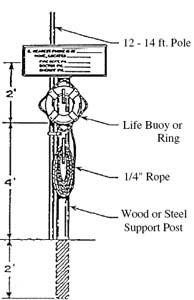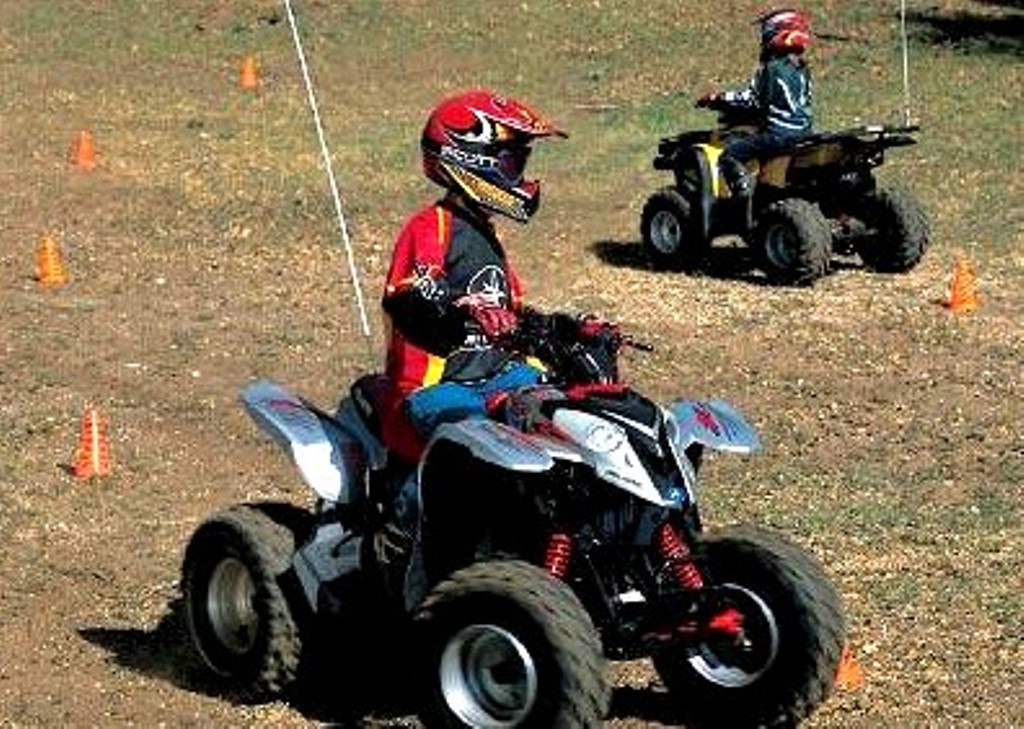(Source: Penn State Ag Safety and Health)
Use the following format to cite this article:
Grain dust explosions. (2012) Farm and Ranch eXtension in Safety and Health (FReSH) Community of Practice. Retrieved from http://www.extension.org/pages/63142/grain-dust-explosions.
Grain dust explosions of any size can cause damage to equipment, reduced work time, and injury or death. By controlling grain dust emissions, you can provide a cleaner and safer work environment for your employees and community.
Grain dust is highly combustible, so a fire or an explosion can happen at a large grain-handling facility or in a grain-storage area on a local farm or ranch. Four basic elements must be present for a grain dust explosion to occur: fuel, oxygen, confinement, and an ignition source.
- Fuel: dust particles from wheat, oats, barley, or other types of grain that are suspended in the air or layers of grain dust in a confined space
- Oxygen: normal oxygen levels and a continuous air supply
- Confinement: areas of confined space such as grain bins, basement tunnels, bin deck galleries, silos, downspouts, and enclosed drag conveyors
- Ignition source: short circuits, static electricity, lit cigarettes or lighters, overheated bearings, friction, cutting torches or welding devices, grinder sparks, lightning, and so on
Explosiveness of Grain Dust
The explosiveness of dust from different types of grain depends on the dust’s minimum explosive concentration (MEC), a measurement of particle size and energy nature. The accepted MEC for grain dust explosions is approximately 0.05 oz. per cu. ft. The optimum explosive concentration (OEC) equates to about 10 times the MEC, approximately 0.5 to 1.0 oz. per cu. ft. The MEC and OEC measurements vary depending on the type of grain. In an enclosed space with a height of 2 ft., the minimum depth of dust that can lead to explosion is 0.002 to 0.004 in. A typical sheet of paper is approximately 0.004 in. thick, so that critical MEC level can be reached in a very short time. Maintaining grain dust levels at or below the MEC reduces the risk of explosion and increases visibility for workers.
Characteristics of a Dust Explosion
There are two phases in a major dust explosion: a primary explosion and a secondary explosion. The explosions, however, can happen almost simultaneously, so distinguishing between the primary and secondary explosions can be difficult. The dust from the first explosion may actually provide fuel for the secondary explosion by shaking loose settled dust. If fuel, oxygen, and an ignition source are present in a confined space, a series of destructive explosions can occur that may cause structural damage.
Most grain dust explosions occur at grain transfer points. At the transfer points, the movement of grain causes dust to be released at high levels, resulting in suspended dust particles. The suspended dust may collect in leg boots and elevator legs. Dust concentrations in bucket elevators can exceed MEC levels and pose the risk of explosion.
Preventing Grain Dust Explosions
To reduce the risk of a grain dust explosion or fire, focus on controlling dust and reducing the sources of ignition. Preventative measures include continuous housekeeping, sanitation, and regularly scheduled maintenance. Implement a housekeeping or sanitation program to decrease grain dust in all work areas. Leg boots should be cleaned routinely to remove excess dust and kernels. Additional preventative steps include:
- Developing and implementing a routine lubrication plan for bearings on the basis of the manufacturer’s recommendations
- Developing and implementing a standard operating procedure (SOP) for housekeeping practices to minimize grain dust accumulation
- Using a food-grade mineral spray on grain that is being transferred
- Installing a bearing-temperature monitor in strategic locations throughout the grain handling system and implementing a program to periodically monitor bearing temperature
- Installing belt-rub sensors inside bucket-elevator leg casings
- Substituting steel cups with plastic cups in elevator legs
- Using antistatic belting material in legs and horizontal belt conveyors
- Establishing easy-to-open cleanout doors in the leg-boot side panel for easy removal of grain and dust
- Installing dust aspiration systems or a ventilation system at grain transfer points
- Training employees in safe work practices so that they can recognize and prevent hazards that could lead to a grain dust explosion
- Posting No Smoking signs and actively enforcing the rule
- Completing regularly scheduled inspections to locate any defective wiring or sparking and make repairs as needed
Use the following format to cite this article:
Grain dust explosions. (2012) Farm and Ranch eXtension in Safety and Health (FReSH) Community of Practice. Retrieved from http://www.extension.org/pages/63142/grain-dust-explosions.
Sources
Combustible dust in industry: Preventing and mitigating the effects of fire and explosions. (2005) United States Department of Labor, Occupational Safety and Health Administration. Retrieved from http://www.osha.gov/dts/shib/shib073105.html.
Grain handling. (n.d.) United States Department of Labor, Occupational Safety and Health Administration. Retrieved from http://www.osha.gov/SLTC/grainhandling/index.html.
Jones, C. (2011) Preventing grain dust explosions. Oklahoma State University Cooperative Extension Service. Retrieved from http://pods.dasnr.okstate.edu/docushare/dsweb/Get/Document-2604/BAE-1737web.pdf.
















